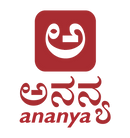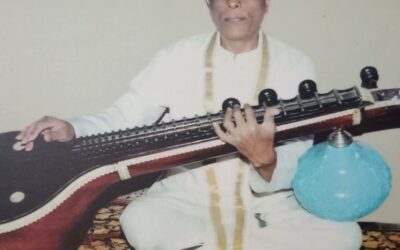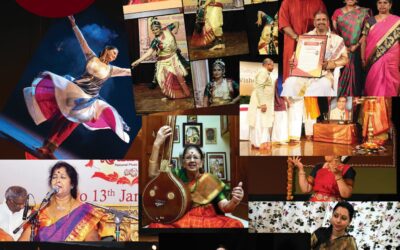APPLICATION OF SRUTIBHEDA TO JANAKA RAGAS
4.1 Introduction
This chapter deals with the application of modal shift of tonic to janaka ragas. The srutibheda possibilities for each janaka raga are determined using a computer program and tabulated. The results agree perfectly with the srutibheda possibilities of janaka ragas published in earlier works. The properties of these moorchanas are then explored in detail.
4.2 Organisation of the janaka ragas
As already defined janaka or melakartha ragas have scales that have the seven swaras S,R,G,M,P,D and N in both the arohana and avarohana. The notes of the arohana are in a strict ascending order and those of avarohana in a strictly descending order. Notes of the same variety are used in the arohana and avarohana.
In the context of janaka ragas, we introduce some additional swaras :
- Suddha gandhara designated by G1,
- Shastsruti rishabha designated by R3,
- Suddha nishada designated by N1 and
- Shatsruti dhaivata designed by D3.
In reality, these swaras do not actually represent any new swarasthanas or frequencies; they are only new names to some of the existing swaras. Suddha gandhara has actually the same swarasthana as that of chatusruti rishabha, shatsruti rishabha that of sadharana gandhara, suddha nishada that of chatusruti dhaivata and shatsruti dhaivata that of kaishiki nishada. In other words,
G1=R2
R3=G2
N1=D2 and
D3=N2
There are 72 melakartha ragas and the credit of organizing and numbering them goes to the great musicologist, Muddu Venkatamakhi of 17th century A.D. His way of generating and organizing these 72 ragas is considered very scientific and this system, known as the Kanakangi Ratnangi system, is widely followed. Subsequent to the formation of the 72 janaka raga scales, the names of some of the ragas conforming to this system were changed and new ones given to some of the scales which had no names till them.
In this mela system, there are 12 cycles or chakras each consisting of 6 ragas. The first 6 chakras contain shuddha madhyama and are known as poorva melas. The next 6 chakras contain prati madhyama and are known as uttara melas.
Each chakra uses a unique combination of notes rishabha and gandhara. Thus,
In the first chakra the swara combination R1, G1 is used.
In the Second, the swara combination R1, G2 is used.
In the third, the swara combination R1, G3 is used.
In the fourth, the swara combination R2, G2 is used.
In the fifth, the swara combination R2, G3 is used, and
In the sixth chakra the swara combination R3, G3 is used.
The first 6 chakras, as mentioned earlier, contain suddha madhyama and the next 6 (that is, the chakras 7-12) use the same swara combinations of rishabha and gandhara as above but contain the swara prati madhyama.
Within a given chakra the combination of the swaras dhaivata and nishada varies. That is, the 6 ragas in any chakra are formed as follows:
The first raga uses the swara combination D1, N1.
The second raga uses the swara combination D1, N2.
The third raga uses the swara combination D1, N3,
The fourth raga uses the swara combination D2, N2.
The fifth raga uses the swara combination D2, N3 and the
Sixth raga uses the swara combination D3, N3.
Table 4.1 summarises the 12 chakras along with the names and scales of the ragas that appear in them. In order to remember the chakras easily, suitable names have been given to each in such a way that they indicate their serial numbers. For examples, the name Indu is given to the first chakra. In Sanskrit Indu means the moon. As there is only one moon, this name indicates that the chakra bears the serial number1. Likewise, the second chakara is given the name Netra. In Sanskrit Netra means the eye. Since there are two eyes the term is appropriate for the second chakra.
Thus we see that there are 12 chakras. 6 chakras with suddha madhyama and 6 with prati madhyama. Each chakra contains 6 ragas and thus we have 12 x 6 – 72 melas.
4.3 Katapayadi Sutra
In Sanskrit, the word sutra means a rule, or a formula. The Ka-ta-pa-yadi sutra is a formula that is used to determine the number of a given mela from the name of the mela. This sutra is summed up in the four phrases kadinava, tadinava, padipancha and yadyashta.
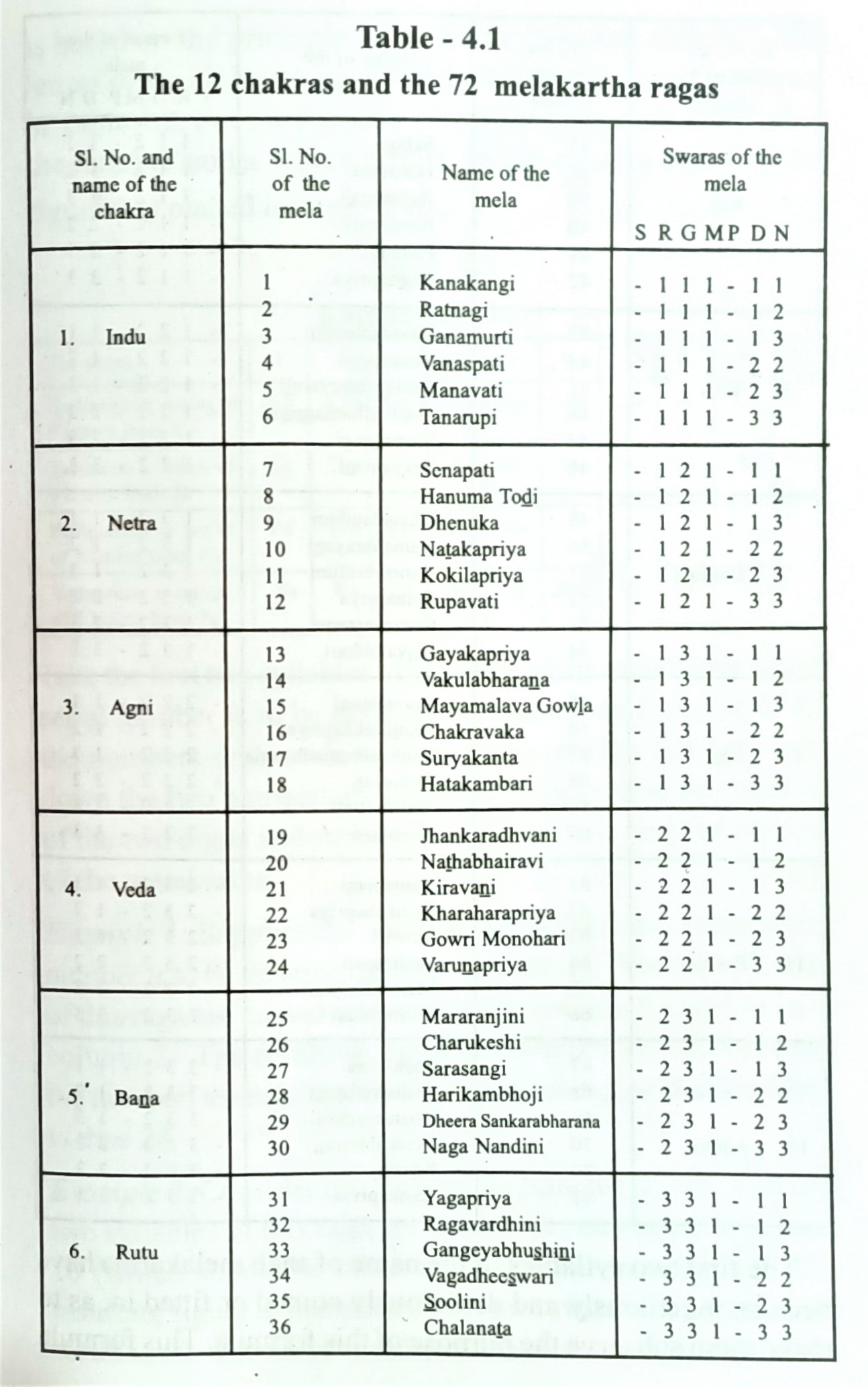

The first two syllables of the name of each melakartha have been so ingeniously and dexterously coined or fitted in, as to make them subserve the purpose of this formula. This formula is based on the principle letters of the Sanskrit alphabet. The letters of the alphabet are divided into compartments as shown in Table 4.2. For the purpose of this formula, each letter takes the number under which it falls. In the column next to 9 the figure 0 is placed instead of 10.
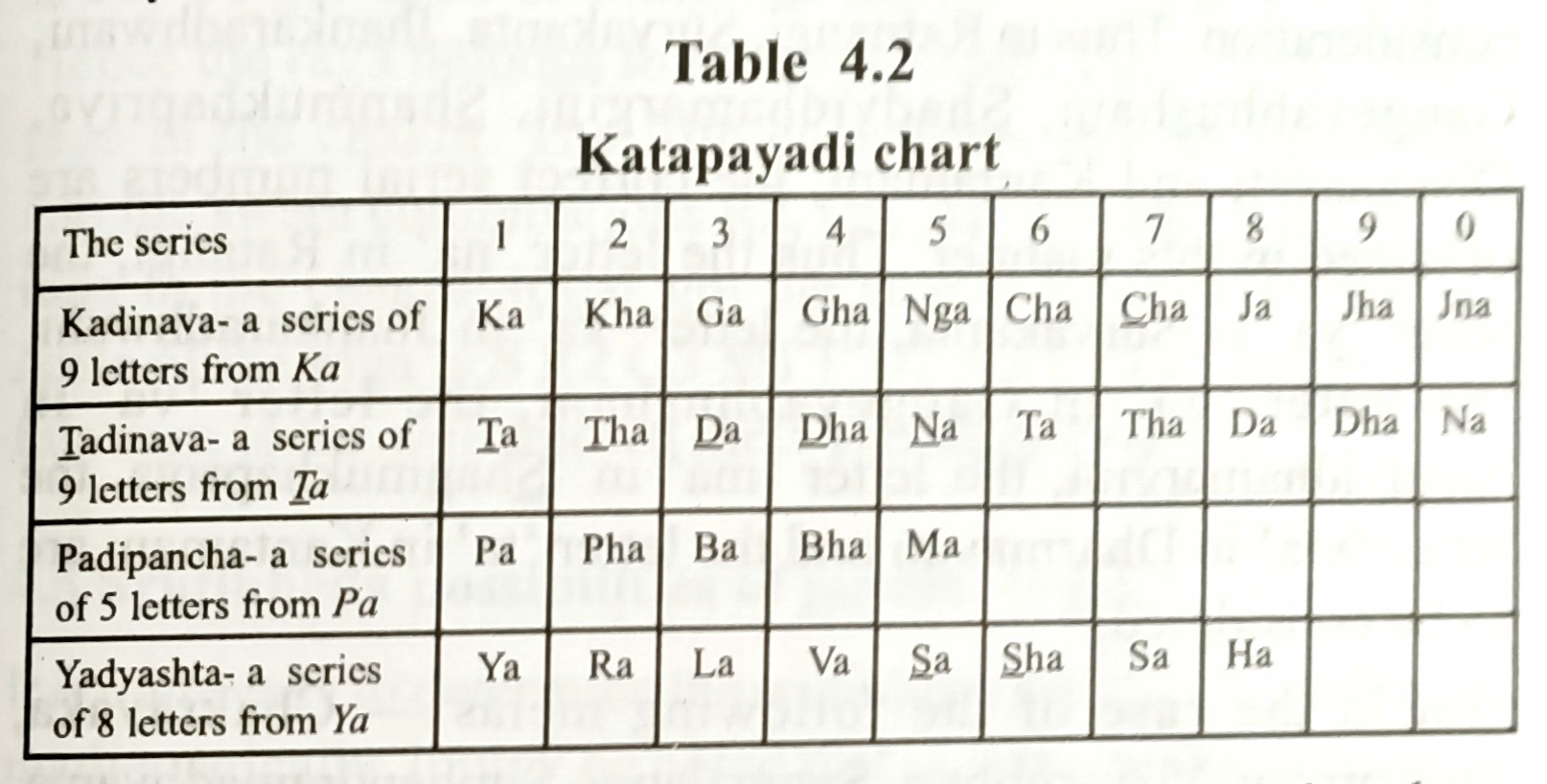
Take the first two syllables of the name of the melakartha whose serial number is to be determined. Ascertain from Table 4.2 the numbers under which these two syllables fall and write down the two numbers in the order. Then reverse this number of the two digits and the resulting figure will give the number of the melakartha.
Example 1 : Suppose the name of the melakartha whose serial number is to be determined is Harikambhoji. The two syllables of this raga are ha and ri, ha occurs in column 8 and ri or ra in column 2. The resulting figure is therefore 82. Now reverse the number, the result is 28. The serial number of Harikambhoji is thus 28.
Example 2 : Consider the melakartha Namanarayani. The first two syllables of this raga are na and ma; “na” occurs in column 10 (which should be taken as 0) and “ma” in column 5. The resulting figure is therefore 05. Now reverse the number, the result is 50. The serial number of Namanarayani is thus 50.
Other examples may be worked out similarly.
-to be continued….
****
